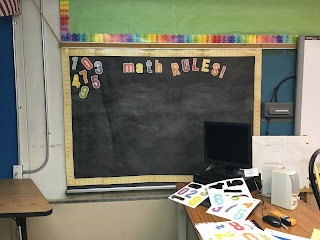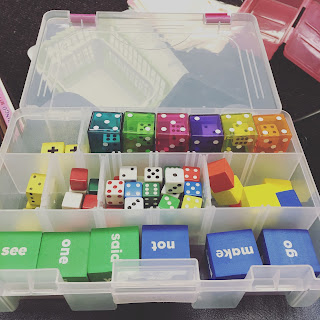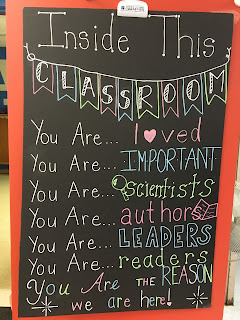Happy Summer! Because I am moving classrooms and teaching preschool this summer, this is the FIRST time I've been able to work on the blog! Since the end of the school year is always a little crazy, I'll be sharing some of the highlights of the last few months of school. Each section will be separated by a title describing the activity or unit of study.
I hope this helps with some ideas and planning for the (quickly) approaching school year! :)
The History and Science of TRANSPORTATION!
(easily one of my FAVORITE units)
In addition to these pictures, we also completed a KWL chart (of course) but I used sticky notes for the Want to Know section. Each child received his or her own sticky note and was given the chance to write a question they wanted to answer by the end of the unit. This was a great idea because I knew each child was participating, it engaged all the children (post-its are so fun), and children weren't copying each other's questions as much (more variety!)
After the introduction to the unit, we relied on our past experience to describe why we believed transportation is helpful to people
One of our first projects of the unit was to create a boat that would float given popsicle sticks, tape, glue, tissue paper, wax paper, toothpicks, and playdoh. The children were grouped in groups of 5 and placed at a table with a random spread of materials. Yes, it got crazy, loud, and a little emotional, BUT I wanted to see how the children could communicate their thoughts, how they used their previous knowledge, and how they could work together to create a project. This was so interesting because no matter how many times I tried to explain to each group that they were all making ONE boat together, some groups still divvied up the supplies and tried to each make their own. This didn't work. Let's just say it was VERY informative and led to many discussions about sharing ideas and how to disagree and agree appropriately. True teaching moments!
Here we used a video of origami boats to spark some ideas about boat shape and formation.
The wax paper group needed MUCH help in folding their boat appropriately but they did create and place a sail on their own!
The playdoh group focused mainly on boat shape as they realized their material was quite heavy. After many tries... they decided to make a wide shallow boat that DID float!
The popsicle stick group needed some guidance on how to stack the sticks without leakage.. and on how tall the raft bottom should be but here's their result.. which definitely did float too!
Here we began our history of transportation of humans. Pairs of students were given six pictures of types of transportation (feet, cars, boats, trains) and they were to try placing them in order from oldest to newest BEFORE we read about it. We then kept the pictures in front of us, listened to the story and discussed and replaced our pictures in the correct order. Best part of this was listening to their thoughts and arguments for the timing of each type of transportation.
Together, we read a short passage (as they followed along) and answered some comprehension questions. A great introduction to many passage and response questions on our wonderful standardized tests....
Later in the unit, we focused heavily on cars (as these are Ms. Hendsbee's FAVORITE). Here, the bees are ordering Mustang cars from oldest to newest and explaining to their partner and then the group WHY they placed the cars in this order. So interesting and fun. We were able to talk about similarities and differences in older and newer cars.. and ALL the kiddos loved it!
We then read one of my FAVORITE books... If I Built a Car by Chris Van Dusen and turned and talked about who and what we would put in our own crazy cars. We used this brainstorm to help us with the following activity. First, the bees filled out a think map about all of the parts they would put in their own crazy car and then drew a detailed picture to illustrate it!
At the end of our unit, we took all of the transportation and car knowledge we knew and embarked on designing, planning, and creating our own car! Our STEM focus was on simple machines, especially the axle and wheel. We first completed a think map of all the parts of a car and then circled the parts that we were able to make in our classroom.
Then we got to work!
Above, we are trying to decide which materials we should use to make wheels for the car that will actually turn. I tried to intervene as little as possible so that the children could banter back and forth to decide what will and won't work. We decided the long tubes, while they rolled, would not be study or bouncy enough for wheels and used the wooden dowels and pool noodle slices to create a wheel and axel. Thank you How to Build a Car by Saskia Lacey.
Below, we divvied up the work again and painted headlights, taillights, seats, a steering wheel, and the body of the car.
Looks drivable, right? :) but using the string, it was really able to drive along the floor with turning wheels! We were SO PROUD! I hung the car from the ceiling for the remainder of the year!
Mother's Day Craft
We took blank puzzles from Lakeshore and used well-mixing colors to paint them however we liked.
When they were done, we used first pencil and then black marker to write " I love you to pieces Mom!" We then broke the puzzle and placed it in a homemade envelope. The message was surely a surprise!
Fairy Tales Literacy and Social Studies Unit
We could NOT have had so much fun with this unit without the help of Jamie Perchinsky at the Somewhere in Second blog and her Fairy Tales bundle. You can buy it here
Fairy Tale Bundle
Each child gets a manila folder, pastes this title cover to the front and the above pages to the inside. Each activity we compete throughout the unit gets placed inside the folder which doubles as a tracker for each of the stories we read together. My FAVORITE part of this unit is the fairy tale elements chart. After we read each story, we write the title in the left hand column and then check off which elements of a fairy tale were present in the story.
To add to this package and provide some interest for the not-so-romantic of my children, we also read the fractured fairy tales and added them to our charts. The addition of some "spice" to the fairy tales made for such a wholesome unit and a GREAT way to compare similarities and differences between texts. Honestly, this was one of the units where the bees were absolutely the most engaged. Who couldn't be? These tales are classic for a reason.. they just never seem to be in our "mandated curriculum".......
Some of the boys reading their favorite, Jack and the Beanstalk!
After reading each of the tales, we did some sort of response. Here is an example from the Three Billy Goats Gruff. During the story we focused on visualization and so none of the pictures were shown to the students as we read. When it was completed, the students were each assigned a character and told to draw what they visualized during the reading of the story. The results were AWESOME and so fun to compare to the ideas of the illustrator.
P.S. we also watched each of the fairy tales on youtube when we had finished the stories. They are all located on youtube in short movies or shows. This provided us with another look and point of view for the story AND helped us calm down as it was the end of the year in a very hot classroom...
Our KWL chart
After the Three Little Pigs, the students were assigned a random material and asked to persuade the audience into thinking the material was a good or bad choice to make a house and why.
After reading Hansel and Gretel, the bees were asked to complete a thinking map of how their very own candy house would be built. Little did they know, when they were finished, we really made them!
Some sequencing for Goldilocks and The Three Bears.
Our final project in our fairy tale unit, which took us about a month from start to finish to complete, was writing and publishing our very own fairy tales! The only rules were that they had to have at least three elements of a fairy tale; a wicked character, Once Upon a Time, magic etc. We used a program on ABCya.com that let us type our stories and then print them out in this AWESOME format below. Of course, we all were able to share and take questions on our wonderful FIRST GRADE creations!
AND! we hatched some butterflies! Always so amazing, nerve racking, and beautiful :)
we kept our own observation journals
Living and Nonliving Unit
I love to talk about wants and needs during our living and nonliving unit. We discuss what living things need to survive because it helps us to distinguish between things that need things and things that just exist. However, we seem to always need to discuss what WE actually NEED.
Our outdoor nature walk to record living and nonliving things
Have a wonderful, relaxing, blog-reading, classroom-preparing, and family-filled summer!!



























































































